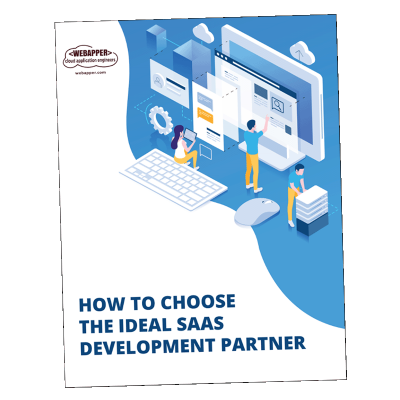9 Product Challenges for New SaaS Companies
(and What To Do About Them)
We are connoisseurs of our own SaaS development dog food. That is, we practice the methods we prescribe here on our blog for our own SaaS product and for those we build for others. We believe in these methods after seeing them work across a variety of markets & industries. We recently had an interaction with a startup, and we felt obligated to share a list of product challenges for new SaaS companies. As habitual problem solvers, we’ll also prescribe what to do about them.
Defining the minimum viable product (MVP)
Clearly identify the main customer pain point your SaaS product seeks to alleviate. Avoid extraneous features at the outset. Collaborate with potential users to rank proposed features, then narrow down to 1-3 features that provide immediate utility. Build mock-ups & prototypes to refine usability. Validate with a small group of users and gather feedback. Your MVP should showcase your product to attract initial customers. Maintain focus on delivering a small set of critical features that makes your product viable when you launch.
Validating product-market fit
You achieve product-market fit when your product resonates with the target market. To validate your fit, identify and onboard a small group of ideal potential customers. Have them use your product and provide candid feedback through surveys & interviews. Tracking engagement by measuring how often they use the product and which features they use most often. Continuously optimize based on feedback and confirm with further testing. Slowly expand to a broader customer base.
Choosing the right tech stack
The technology choices you make early in a startup have long-term impact. When selecting platforms, there are trade-offs between flexibility and hiring ease. Unless proprietary tech offers a strategic advantage, choose more popular options that have large communities. Architect for performance, security, and maintainability. Choose technology that empowers productivity. The right stack facilitates velocity and quality while allowing flexibility to evolve.
Prioritizing the product roadmap
Gather input from sales, support, and engineering to build a comprehensive list of features. Score each feature on criteria like business value, dependencies, and time to market. Prioritize features on business value based on customer requests and potential revenue. Factor in technical considerations and dependencies. Focus your roadmap on the top high-value features. Re-evaluate and reprioritize the roadmap regularly based on customer feedback and market trends. Along the way, avoid scope creep.
Scaling a development team
Rapidly scaling your development team presents challenges, such as maintaining culture. Hire slowly but integrate quickly. Prioritize people and processes alongside product. Hire a strong lead, looking beyond pure technical skills for culture fit. Onboard new hires with training in processes and context. Modularize code and architecture to allow distributed teams to work independently. Transition oversight gradually from founders to new leaders. Automate testing and quality checks to allow faster scaling.
Balancing innovation with stability
Continuous innovation is essential for SaaS companies. Radical, rapid change too can compromise stability, so take a strategic approach to balancing them. Utilize modular design and architect the tech stack for frequent upgrades (i.e., small, incremental changes rather than giant monolithic releases). Implement comprehensive quality assurance processes. Communicate timelines clearly and support older versions as needed.
Managing technical debt
Technical debt accumulates over the life of your product. Left unattended, it slows innovation and increases bugs. Allocate regular sprint time for debt repayment — a sustainable pace balances some debt paydown each sprint with new feature development. Institute processes like code reviews and static analysis to prevent new debt. Continually refactor and simplify architecture. Technical debt should be strategically managed, not feared.
Maintaining velocity and quality
Like balancing innovation & stability, balancing speed & quality is critical. Use version control and code review processes early to maintain quality standards. Automate testing and enable fast feedback. Empower developers to own quality through testing and automation. Implement continuous integration and delivery, then monitor velocity, error rates, and resolution time. Keep teams small and focused on deliverables. Celebrate successes frequently.
Integrating with third-party services
SaaS integrations with third-party platforms expands capabilities but can add complexity. Assess business needs to determine if an integration is truly necessary or if a workaround can suffice. Evaluate costs, risks, and implementation timelines. Use published APIs when feasible, and implement toggles to deactivate integrations if needed. Rigorously test end-to-end functionality and error handling. Actively monitor third-party availability and performance. If a system becomes core to the product experience, build capabilities in-house eventually.
Overcoming Product Challenges for New SaaS Companies
A new SaaS company must balance speed with stability and simplicity with innovation. People and culture heavily impact the product. It starts by launching an MVP that nails the core value proposition and finding product-market fit early. As the product matures, you must architect for innovation & growth using a scalable stack and a smart development team that balances quality with velocity. Focus on moving fast to deliver value to customers, stay nimble to outperform the market, and don’t neglect paying down technical debt.



Leave A Comment